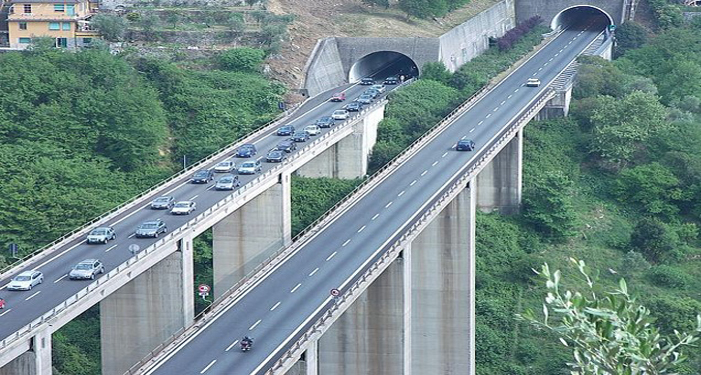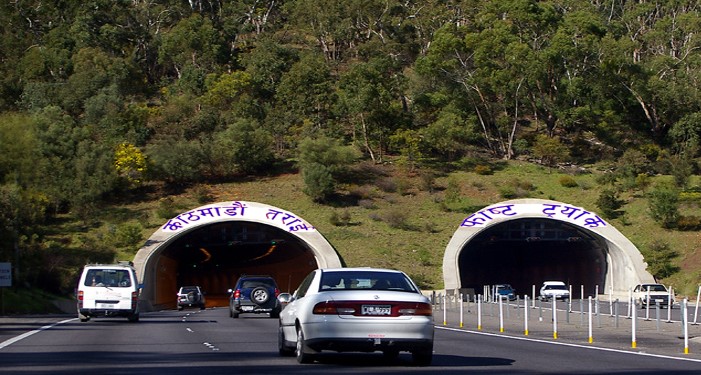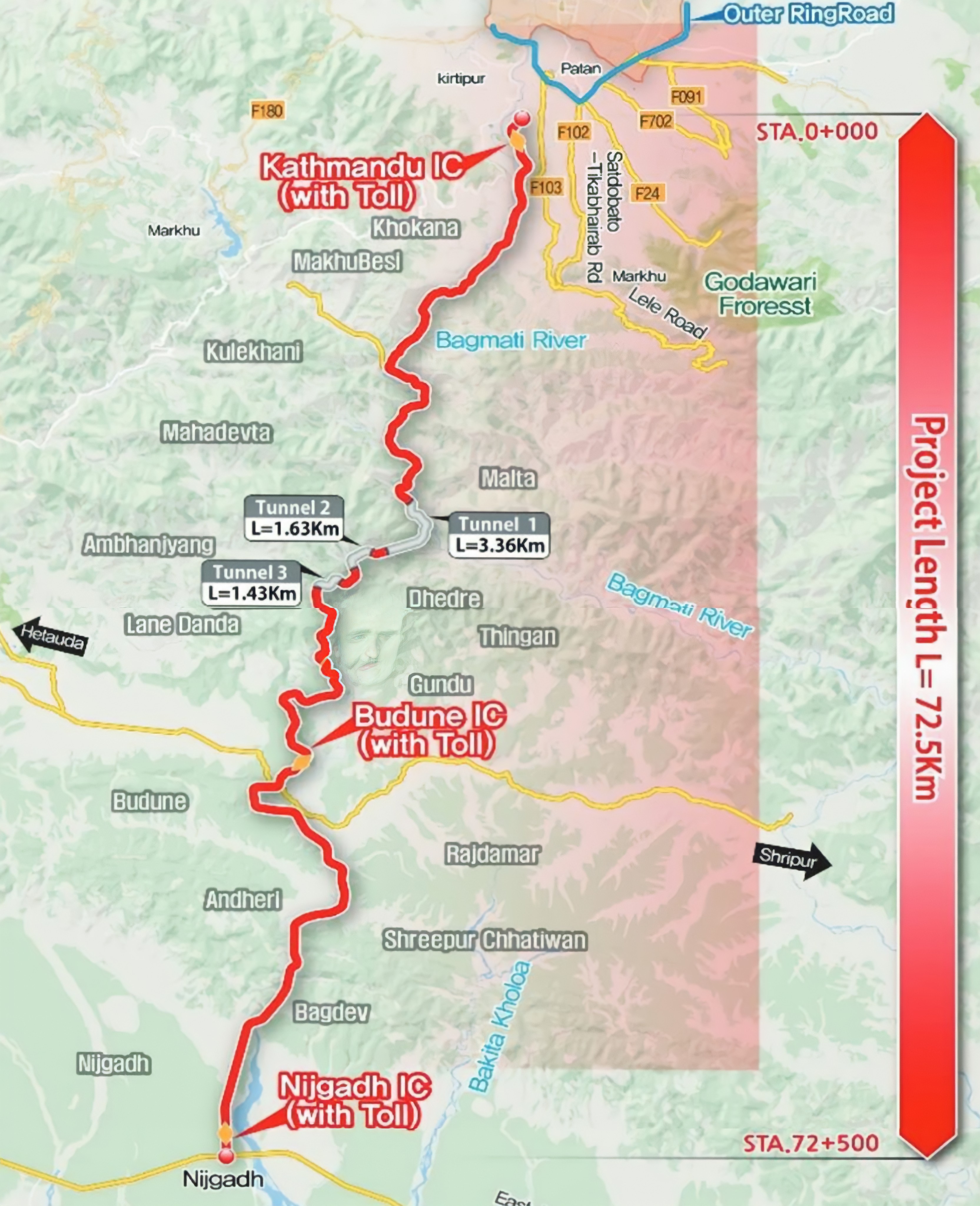A Kathmandu-Tarai expressway to link the valley with the Tarai plains via the shortest-possible motorway was conceived decades ago.
But the idea didn’t come into fruition due to various technical, political and financial hurdles. Then, in 2017, the then Pushpa Kamal Dahal-led government officially handed over the project to the Nepal Army.
The initial deadline of the expressway was Sept 2021 but was extended to Jan 2025 due to lack of progress: the army has completed just 16.10 percent work till date.
As work on one of the country’s flagship infrastructure projects sputters on, a dwindling number of people believe the fast-track, even if completed someday, will have the desired impact on development.
But how would Nepal have gained had the fast track been completed by its initial 2021 deadline?
First, says Uma Shankar Prasad, a member of National Planning Commission, the 72.5-km route would have drastically reduced the travel time between Kathmandu and Nijgadh of Bara district in the Tarai.
“This would have saved the country millions of dollars by reducing fuel consumption and vehicle maintenance cost,” he says. “We would have had a better balance of payment and smooth and fast transport would have contributed to our GDP.”
But a former secretary of the Nepal government, who has been closely following the project, does not see the expressway as economically viable.
 A concept picture of twin tube exit of Kathmandu-Tarai fast track.
A concept picture of twin tube exit of Kathmandu-Tarai fast track.
“There would have been no meaningful change even if the project was completed in 2021,” he says while requesting anonymity. “The fast track cannot generate profit and will thus be a burden for the government. He says the fast track’s passage through an earthquake-prone area presents additional challenges.
In fact, the burden on the treasury has increased.
The government in 2021 completed the construction of dry ports at Birgunj and Chobhar. They were built exclusively for the expressway. Had the fast track been completed earlier, the dry ports could have started generating revenue—rather than bleeding money as they currently are.
Due to inflation, the estimated project cost has risen from Rs 80 billion to Rs 175 billion. Moreover, the NPC now reckons the expressway could cost Rs 213 billion in current prices, reaching a high of Rs 300 billion by Jan 2025.
“Even in a straightforward calculation, timely completion would have saved us almost Rs 80,” says Chandra Mani Adhikari, an economist and former NPC member.
He says a completed expressway would not just have improved Nepal’s trade access, but also increased Nepal’s production and export capacities.
Research suggests Kathmandu-Tarai fast track would decrease national fuel consumption by 20 percent. “Even with the saving of 10 percent fuel, there will be a national saving of Rs 20 billion. This is important, given that Nepal imports almost Rs 200 billion worth of fuel a year,” says Adhikari.
 A concept picture of twin tube entry of Kathmandu-Tarai fast track.
A concept picture of twin tube entry of Kathmandu-Tarai fast track.
The former government secretary does not agree.
“Japan and the Asian Development Bank (ADB) have conducted separate feasibility studies on the fast track. They suggest the route could be underutilized as there are many other road links between Kathmandu and Tarai,” he says.
Moreover, the estimated 90-minute travel time is applicable only for passenger buses and cars, not cargo trucks, which could take 5-7 hours to traverse the route.
Impact on other projects
Investing in Nepal’s mega infrastructure projects is widely considered unwise. The country lacks a good precedent. All 21 national pride projects are behind cost and schedule. The Upper Tamakoshi Hydropower Project, for instance, had an initial estimated cost of Rs 25 billion when the project began in 2011. It was supposed to be completed in 2018. When the deadline was pushed to 2021, the cost ballooned to Rs 90 billion. The Melamchi Drinking Water Project is also suffering a similar fate.
“Timely completion of the fast track would have set a wonderful precedent and could also have hastened work on other national pride projects,” says Govinda Raj Pokharel, the former NPC vice-chairman.
He says timely completion would also have helped attract investors to other important projects.

The airport link
The proposed Nijgadh International Airport is another project directly linked to the Kathmandu-Tarai fast track. Experts say the two projects were pitched around the same time, as they complement each other.
Pokharel, the former NPC vice-chairman, says timely completion of the fast track would have added impetus to the airport project.
“It would have put pressure on concerned parties to expedite works on the airport, which, when complete, will naturally boost traffic on the fast track,” he says.
For now, the fast track project drags on with no certainty of whether the army will require further deadline extensions.
Binoj Basnyat, a retired Nepal Army major general, thinks the army made a strategic miscalculation by accepting the fast track project, which has dented its credibility.
“The project’s timely completion would have enhanced public faith in the army. But the reverse is also true: the army’s competence is being questioned over the long delay on the fast track,” he says.













